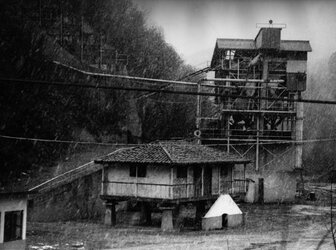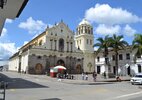ART-RISK – Artificial Intelligence Applied to Preventive Conservation
The ART-RISK Project “Artificial intelligence applied to the preventive conservation of heritage buildings” came about through the technical, social and economic need to establish effective tool support for handling uncertainties in the conservation of cultural heritage. Its main ...
Read more
Project details
Description:
The ART-RISK Project “Artificial intelligence applied to the preventive conservation of heritage buildings” came about through the technical, social and economic need to establish effective tool support for handling uncertainties in the conservation of cultural heritage. Its main objective was to design and validate models and free software, with input from interdisciplinary teams surveyed, using the DELPHI method to facilitate decision-making in risk-assessment focused on the preventive conservation of cultural heritage. ART-RISK was financed by the Government of Spain and the European Regional Development Fund. The research was developed by an interdisciplinary team of partners that includes experts from scientific and heritage fields from seven universities (Universidad Pablo de Olavide, Universidad de Sevilla and Universidad de Valencia in Spain, Universidad Austral in Chile, Fundación Universitaria de Popayán in Colombia, Universidad de las Artes in Cuba and Universidad Nacional Toribio Rodríguez de Mendoza de Amazonas in Peru) as well as two restoration centres (Instituto Andaluz de Patrimonio Histórico and Institut Valencià de conservació, restauració i investigació in Spain). The final outcomes have included the development of three conservation and intervention decision-making models (ARTRISK 1, 2 and 3), and their application to various types of tangible heritage and in different contexts, both European (Spain, Portugal, United Kingdom and Italy) and non-European (Chile, Colombia, Cuba, Peru, Guatemala and Ethiopia). One of the models has been turned into a free software available online, called ART-RISK 3.0, which is useful for the initial assessment of cultural heritage within urban management and town planning. It performs a multi-scenario vulnerability analysis using a prediction model based on fuzzy logic methods and Geographic Information Systems (GIS) aimed to support treatment policies. These tools allow buildings to be evaluated and prioritised according to their vulnerability, the risks to which they are exposed and to draw comparisons between monuments, even those in different cities. This enables the managers of the sites, in a user-friendly and efficient way, to develop informed preventive conservation policies. This aspect is particularly important in the current global socio-economic context of the COVID-19 pandemic, where resources for cultural heritage have been severely depleted.
Similar projects






















